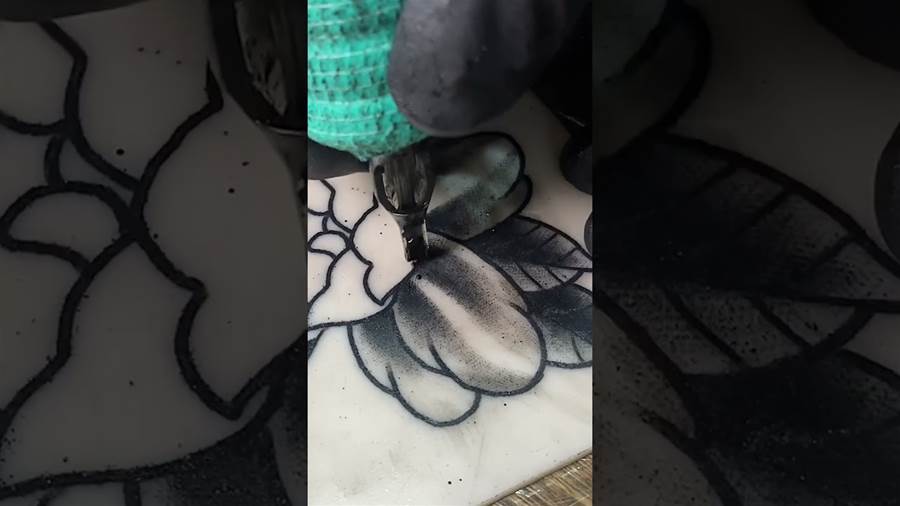

Tattoo shading is an art form that adds depth and dimension to a tattoo design. Brush shading is one technique that tattoo artists use to achieve a smooth and gradient effect. This article will explain how to achieve brush shading in tattooing.
To begin, the tattoo artist should gather all the necessary tools for brush shading. These tools include tattoo ink, a tattoo machine or rotary machine, tattoo needles, and tattoo grips. It is important to have a variety of needle sizes to achieve different levels of shading.
The first step in brush shading is to choose the appropriate colors for the design.
It is advisable to start with lighter shades and gradually build up to darker tones. This technique will create a more realistic and natural-looking effect. The artist should take into consideration the skin tone of the client, as certain colors may appear differently on different skin tones.
Next, the artist should prepare the tattoo machine by attaching the desired needle size. It is recommended to use a round shader needle for brush shading, as it allows for a smoother and more controlled application of ink. The needle should be clean and properly sterilized before use.
Before starting the actual shading process, the artist should practice on a practice skin or fruit.
This will allow them to become familiar with the technique and ensure a steady hand. It is important to maintain a consistent speed and pressure while shading, as this will result in an even and uniform appearance.
When applying the ink, the artist should hold the tattoo machine at a slight angle to the skin. This angle will allow for better ink flow and prevent the needle from scratching the skin's surface. The artist should use fluid and sweeping motions to distribute the ink evenly across the desired area. It is important to avoid going over the same area multiple times, as this may result in a patchy or overworked appearance.
As the artist progresses with the shading, they should periodically wipe away excess ink and observe the progress. This will help them adjust their technique and ensure a consistent and smooth gradient effect. It is important to take breaks when needed to prevent hand fatigue and maintain precision.
Once the desired level of shading is achieved, the artist should clean the tattoo area thoroughly and apply a sterile dressing. They should also provide aftercare instructions to the client to ensure proper healing and preservation of the tattoo.
In conclusion, brush shading is a technique that adds depth and dimension to a tattoo design.
By following the steps outlined in this article, tattoo artists can achieve a smooth and gradient effect. It is important to choose the appropriate colors, use the proper needle size, and maintain a steady hand throughout the process. With practice and dedication, artists can master the art of brush shading and create stunning tattoo designs.
